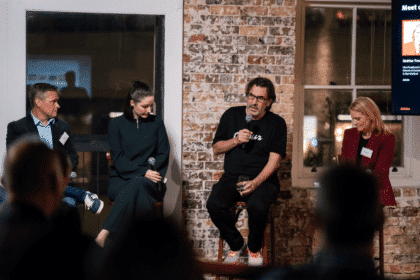Here, Leif Stromnes, managing director of strategy and growth at DDB Australia, explains why sometimes simply having the best product isn’t enough. Instead, you need to consider what surrounds the product to deliver a truly world-class experience (and charge a world-class price).
In 2007, America’s, and arguably the world’s, most in-demand violinist, Joshua Bell performed the world’s most celebrated classical songs on the world’s most expensive violin.
And no one paid him any attention. Let alone money.
The violinist played his 45-minute concert at L’Enfant Plaza Station, Washington’s busiest thoroughfare where 1,097 people passed him by during his performance. In total, 27 people stopped and briefly listened, tipping Bell a grand total of $32.17.
A week before, the same performance commanded $1,000 a minute. For this performance, he earned less than $40 an hour.
A one-time child prodigy, Joshua Bell’s parents decided on music lessons when they saw their four-year-old son had strung rubber bands across his dresser drawers and was replicating classical tunes by ear, moving drawers in and out to vary the pitch. Now 39, Bell had arrived as an internationally acclaimed virtuoso.
Bell plays all his concerts, including this one on a $US3.5 million violin that was handcrafted in 1713 by Antonio Stradivari during the Italian masters’ “golden period” where he had access to the finest spruce maple and willow, and when his technique had been refined to perfection.

Bell’s first song was Johan Sebastian Bach’s Chaconne, described as not just one of the greatest pieces of music ever written, but one of the greatest achievements of any man in history.
Bell played the song with so much acrobatic enthusiasm, his mop of black hair seemed to dance with the instrument and his body leaned into the music and arched on tiptoes at the high notes.
One week after his performance at L’Enfant Plaza, Bell headed off on a sold-out concert tour of European capitals where he played to monarchs and heads of state before heading back to the US to accept the Avery Fisher prize, recognising him as the best classical musician in America.
A 45-minute free concert by the world’s best violinist, playing the world’s most famous classical songs on the world’s most expensive violin, attracted a paltry 27 brief listeners and was worth only $32.17, whereas a week before the same performance, by the same performer on the same violin was feted by a sold-out auditorium, many of whom paid over $250 a ticket.
It’s clear that we only recognise and appreciate quality under the right emotional conditions. To the 1,029 passers-by, this was just a busker in a plaza. To the thousands in the concert hall, this was Joshua Bell, playing Chaconne on a Stradivarius violin. Same product, different experience.
In the 1940s, marketing psychologist Louis Cheskin coined the term “sensation transference”, an emotional response where we make judgments on products based upon the sensory inputs that surround the product, and these inputs directly affect perceptions of quality, satisfaction and the price that we were willing to pay.
Apple understands that the quality of its packaging directly “transfers” to the perceived enjoyment and satisfaction of its computers and phones.
We rightly devote much time and energy to making sure our products are world class. But if we don’t pay attention to the emotional sensations we create when they are sold and enjoyed, being world-class might count for nothing.








